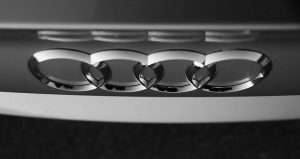Navigating PCP Claims and Wear and Tear Charges in the UK Automotive Market
When returning a vehicle leased under a Personal Contract Purchase (PCP) agreement in the UK, it�…….

When returning a vehicle leased under a Personal Contract Purchase (PCP) agreement in the UK, it's crucial to be familiar with the 'wear and tear' standards set by the BVRLA. These guidelines dictate what is considered acceptable condition for a vehicle at the end of its lease term. Exceeding this threshold can result in additional charges. To avoid unexpected costs, lessees should understand the BVRLA's detailed criteria for car interiors, exteriors, and mechanical components from the outset. Keeping a record of the vehicle's condition at the start and regularly throughout the lease can serve as evidence if there are disputes upon return. If you contest PCP claims, directly engaging with your finance company with supporting evidence like photographs is beneficial for resolving issues efficiently. By adhering to these guidelines and understanding your rights within a PCP agreement, you can minimize the risk of end-of-lease disputes and ensure a smoother PCP claim process in the UK context.
navigating the complexities of car finance, many drivers encounter the topic of wear and tear charges upon returning a vehicle at the end of a Personal Contract Purchase (PCP) agreement. This article demystifies the process, offering clarity on what constitutes acceptable wear and tear within the UK’s PCP framework. We’ll explore the nuances of PCP claims, ensuring you are well-equipped to identify and contest excessive charges. With a focus on practical steps and industry guidelines, learn how to prepare for potential disputes, gather the necessary evidence, and effectively communicate with your finance provider. Whether you’re at the end of your contract or considering a new PCP agreement in the UK, this guide will empower you with the knowledge to manage wear and tear charges confidently.
Understanding PCP Claims and Wear and Tear Charges in the UK

When navigating Personal Contract Purchase (PCP) agreements in the UK, it’s crucial for car lessees to have a clear grasp of how ‘wear and tear’ charges are determined within the context of PCP claims. At the end of the agreement term, vehicles returned under a PCP deal are subject to an evaluation that compares the condition of the vehicle against its expected state at the conclusion of the contract. This is where the concept of acceptable wear and tear comes into play. Lessees are responsible for any damage beyond what is considered normal age-related deterioration, which can result in additional charges. These charges are not arbitrary; they are based on guidelines provided by the British Vehicle Rental and Leasing Association (BVRLA).
Understanding these guidelines is key to managing PCP claims effectively in the UK. The BVRLA’s wear and tear criteria outline specific standards for vehicle interiors and exteriors, as well as mechanical components. For instance, minor scratches or dents that do not significantly affect the appearance of the car might be acceptable, whereas larger or more noticeable damage could incur additional costs. Similarly, cars must be returned with all original keys, and any necessary servicing should have been carried out according to the manufacturer’s schedule. By familiarising yourself with these standards, you can better anticipate the condition of your vehicle at the end of your PCP term and plan for any potential extra charges, ensuring that your overall PCP claim experience is as smooth as possible.

When leasing a vehicle through Personal Contract Purchase (PCP), understanding and disputing wear and tear charges is crucial for lessees to avoid overcharges. Many drivers face unexpected costs at the end of their PCP agreements due to perceived damage or additional wear beyond what is considered reasonable. It’s important for consumers to be aware of the guidelines set out by the British Vehicle Rental and Leasing Association (BVRLA) which define what is regarded as acceptable use of a leased vehicle. If you believe the charges are unjustified, it’s advisable to review the condition report from the beginning and end of your contract carefully. Ensure all marks and scratches noted at handover have been accounted for at the end of the agreement. Documenting the car’s condition at various points during the lease can serve as evidence to support your case. When disputing PCP claims in the UK, it’s beneficial to communicate with the finance company directly, providing clear photographs and a detailed description of the dispute. This proactive approach can often resolve issues amicably without the need for further action, such as an independent assessment or a dispute resolution service. Understanding your rights and responsibilities under a PCP agreement and keeping thorough records throughout the lease term can significantly reduce the potential for disputes at the end of your contract.
In conclusion, navigating PCP claims in the UK can be a complex process, particularly when encountering wear and tear charges. It’s crucial for consumers to have a clear understanding of these costs within their agreement to make informed decisions. By thoroughly reviewing the terms of your PCP contract and the Fair Wear and Tear guidelines set forth by the British Vehicle Rental and Leasing Association, you can better assess any potential charges upon returning your vehicle. Should discrepancies arise, seeking professional advice or contacting the Financial Ombudsman Service can provide clarity and support. Remember to keep detailed records of the vehicle’s condition throughout the lease term to substantiate your claims when necessary. With this knowledge, you’ll be well-equipped to manage PCP claims effectively, ensuring a fair conclusion to your agreement.







